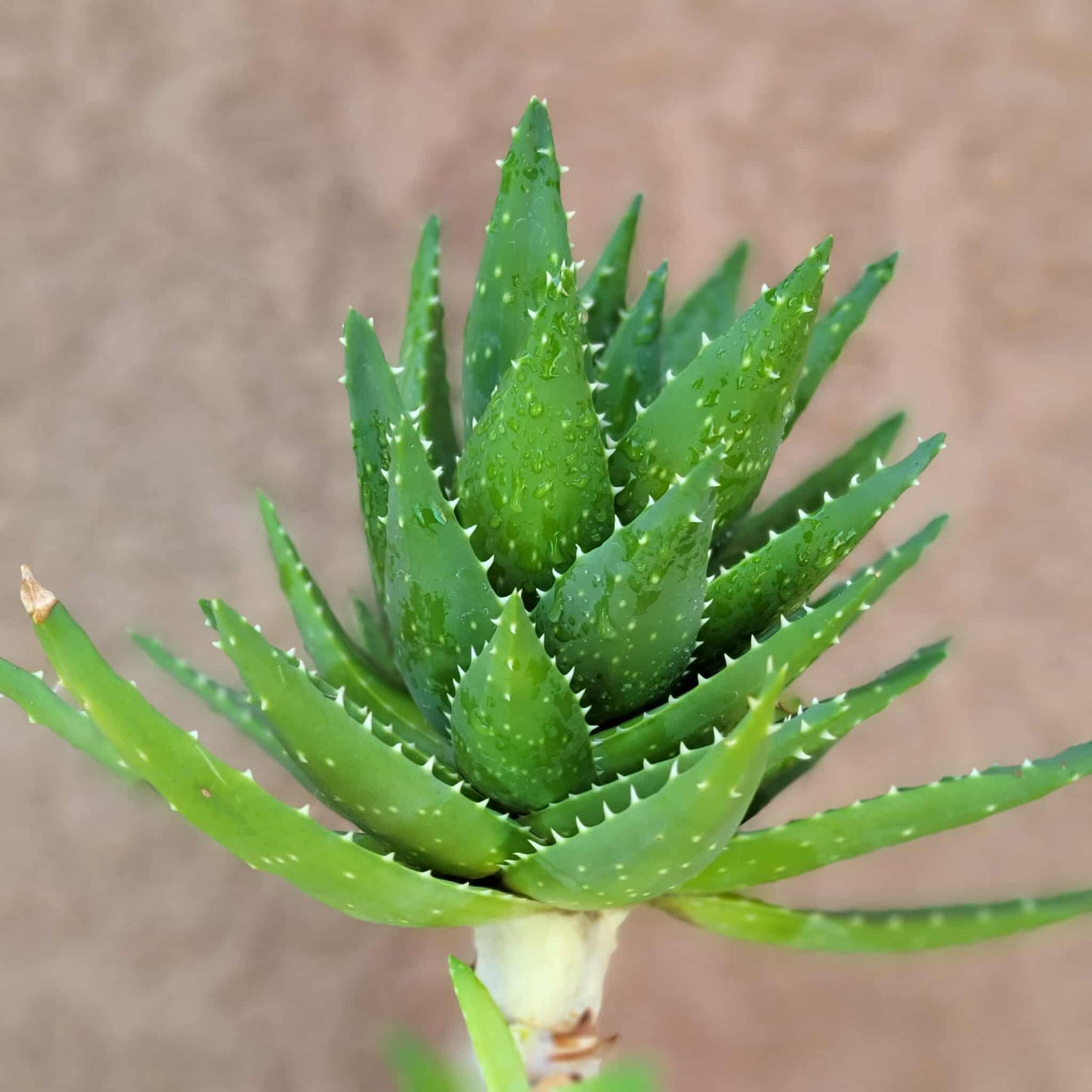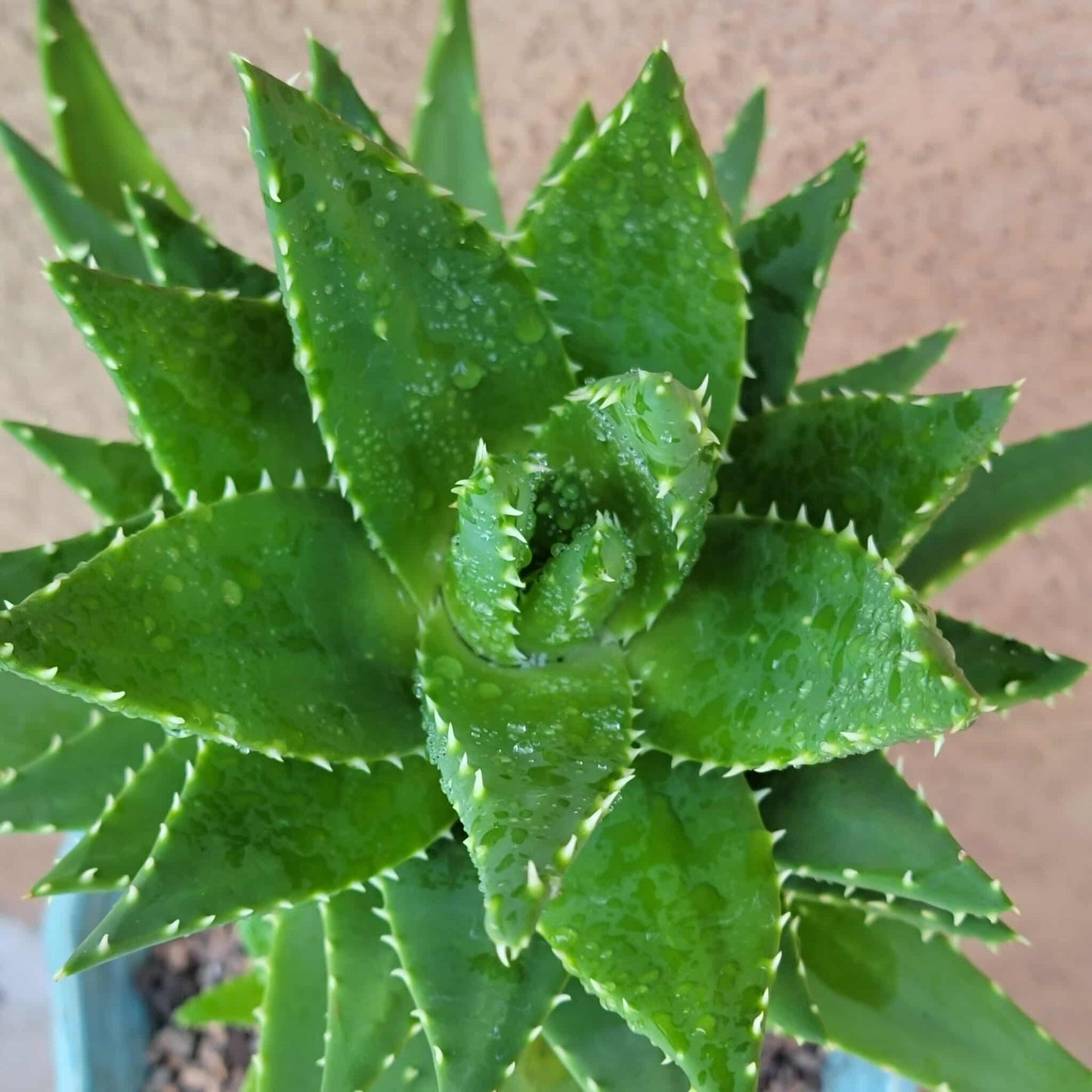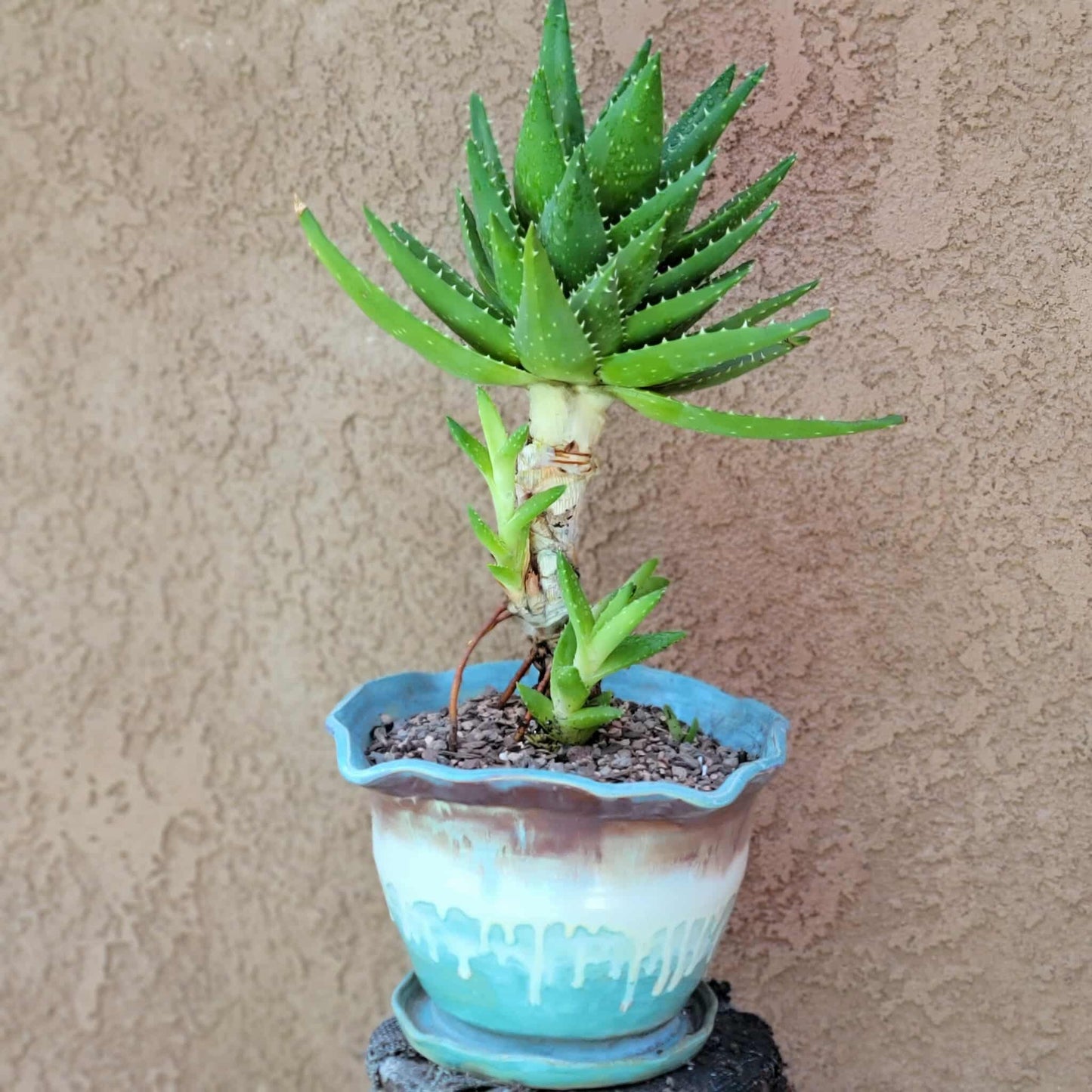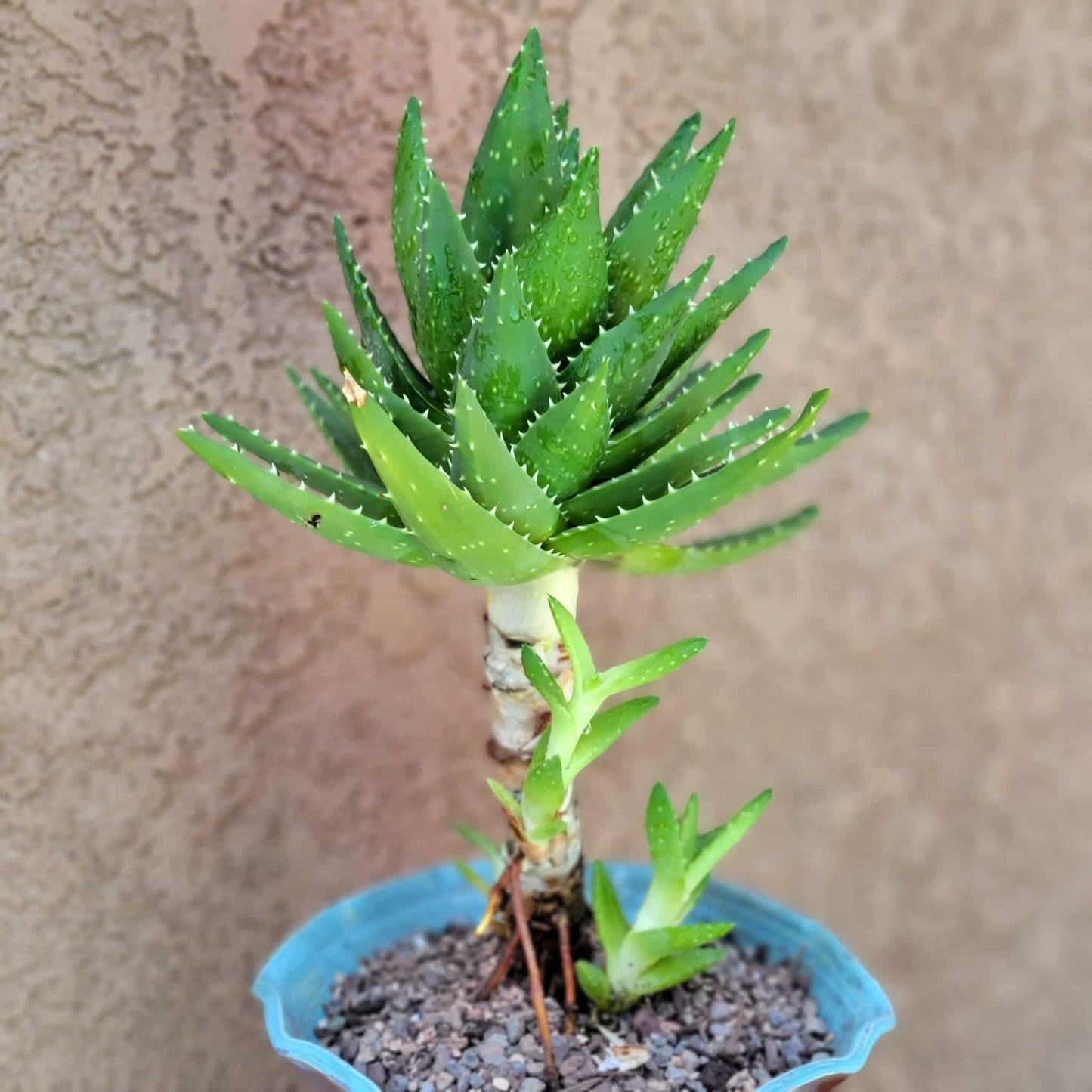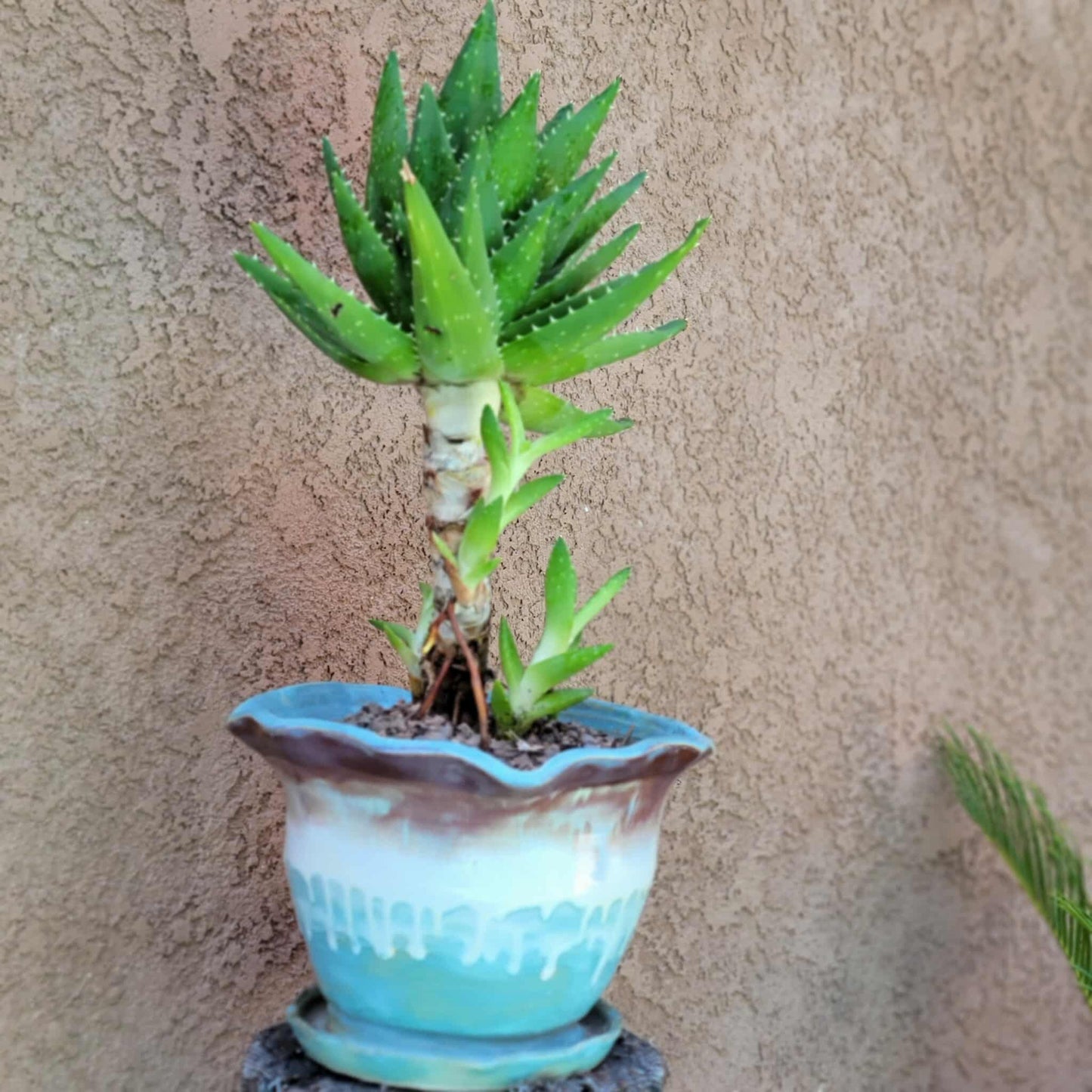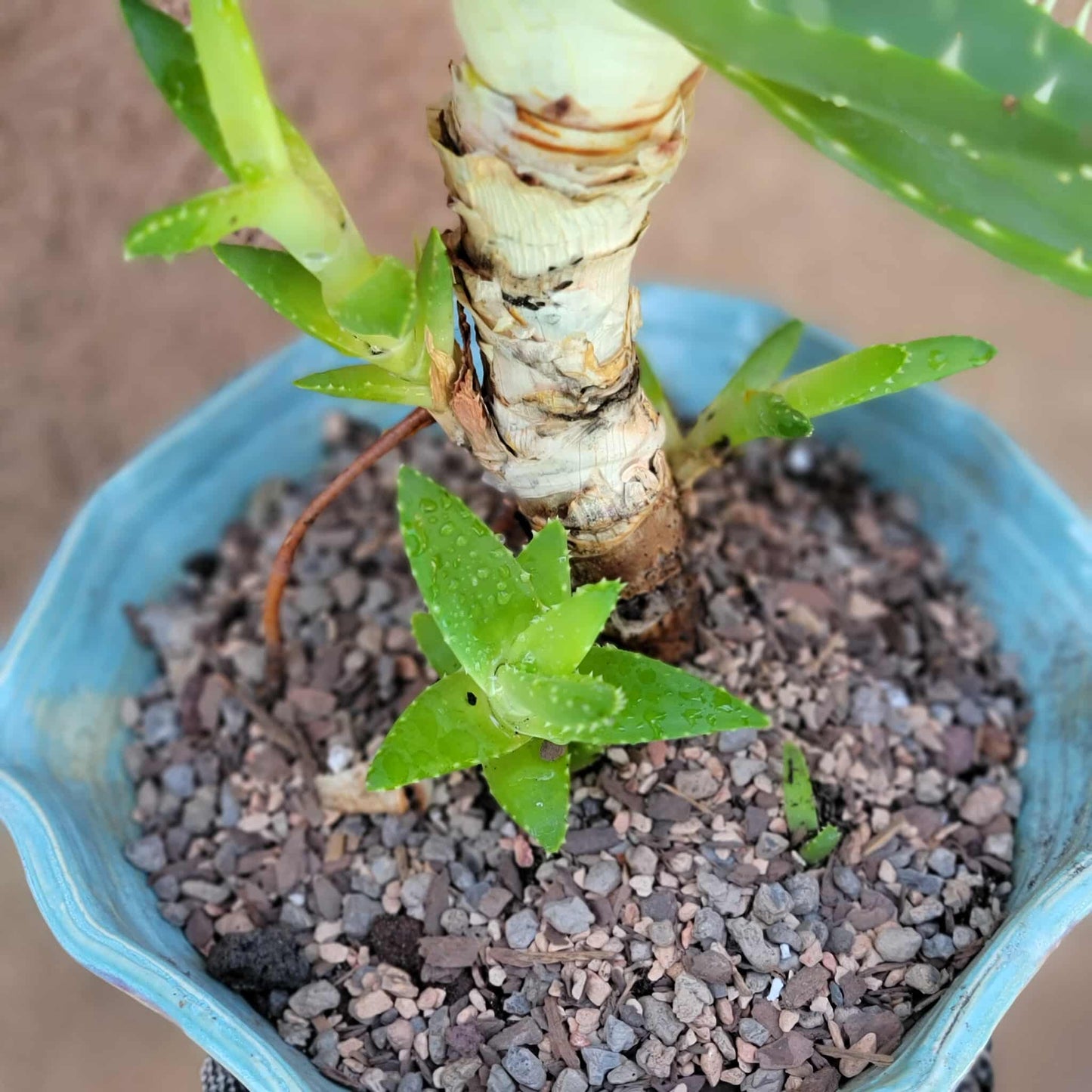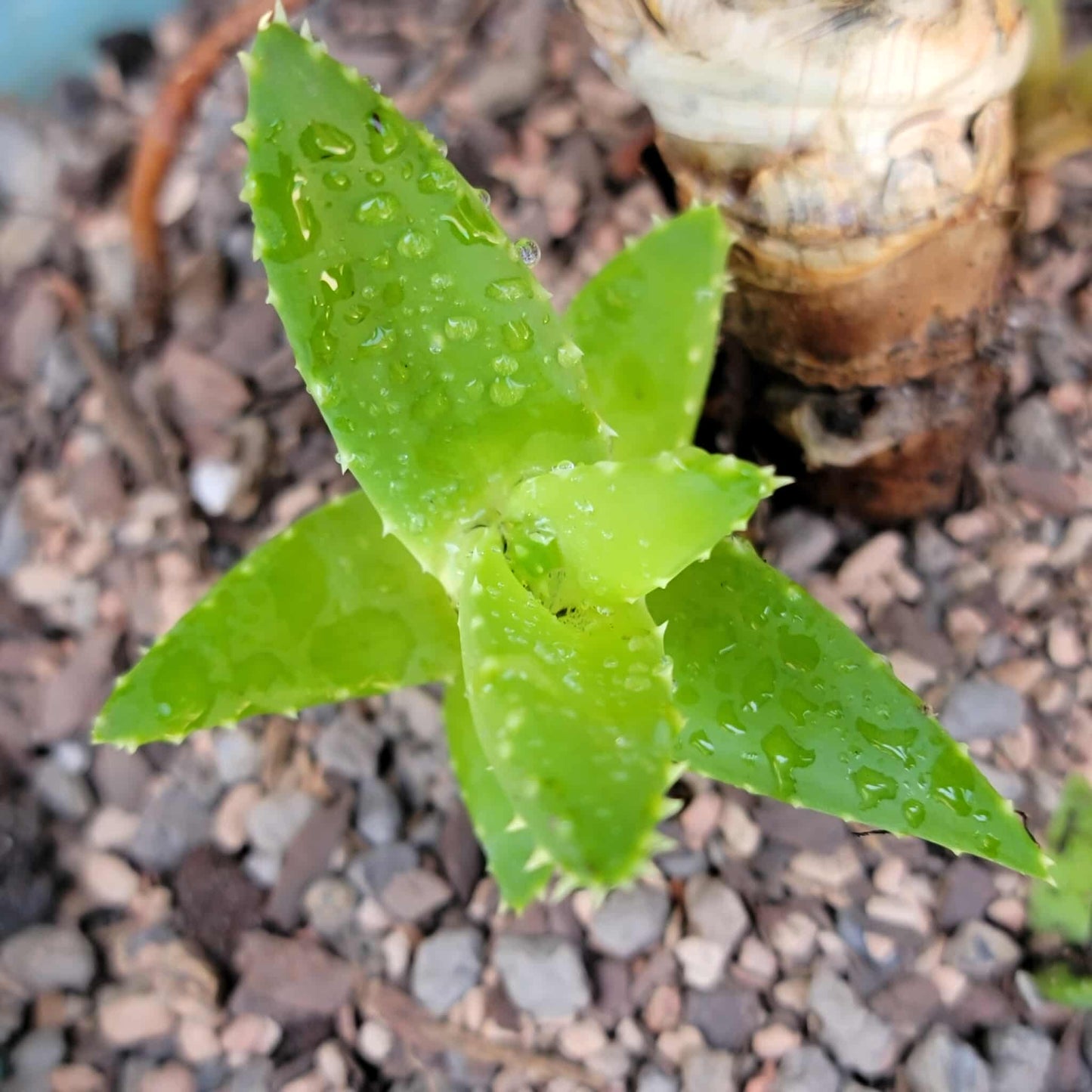Shangri-Ha Cactus Ranch
Aloe perfoliata - Mitre Aloe - 14' Tall!
Aloe perfoliata - Mitre Aloe - 14' Tall!
Couldn't load pickup availability
Aloe perfoliata - Mitre Aloe
You will receive this exact, well-rooted specimen.
Measures 14" tall x 12” wide!
Roots as shown.
This is a substantial and heavy specimen and will be a little expensive to ship.
Showcased here in one-of-a-kind handmade pottery (sold separately).
Will be shipped bare root.
Aloe perfoliata, commonly known as the mitre aloe or rubble aloe, is a creeping succulent native to the rocky, mountainous regions of South Africa's Western Cape. It is known for its resilient nature and distinctive rosettes of thick, fleshy leaves.
KEY FEATURES
· Appearance: The plant is a hardy, branching aloe with stems that can grow up to 6.6 feet long. It often has a sprawling habit, with stems that grow prostrate along the ground and only the terminal leaf-bearing portion being erect.
· Leaves: The thick, fleshy leaves are arranged in rosettes and have margins lined with soft white "teeth". Leaf color is variable; plants in full sun tend to have a bluish tint, while those in the shade are more green. When under stress from intense sun exposure, the leaves may take on a reddish hue. The leaves form a mitre-shaped arrangement, which gives the plant its common name.
· Flowers: In winter, mature plants produce tall, branched stalks with tubular flowers. The flowers range in color from a soft orange to a deep, fiery red.
· Origin and habitat: It is found growing among rubble and rocky outcrops in sandy or clay soils, which explains its common name, "rubble aloe".
CARE REQUIREMENTS
· Sunlight: Mitre aloes thrive in full to partial sun.
· Soil: They require well-draining soil, with added perlite or vermiculite recommended to improve drainage.
· Watering: The "soak and dry" method is recommended for watering. The soil should be allowed to dry out completely between waterings to prevent root rot.
· Hardiness: This plant is not particularly cold-hardy. It is best to grow it in a container that can be brought indoors if winter temperatures drop below 30° F (-1.1° C).
· Dormancy: It is common for Aloe perfoliata to go dormant in the summertime, which is when you may notice its growth slow down and watering needs decrease.
· Propagation: It can be propagated from seeds or by removing and replanting the small offsets that sprout around the base of the plant.
TOXICITY
· The plant contains aloin, which can cause severe digestive issues and liver damage if ingested by humans.
· It is also toxic to pets, including cats and dogs, and can cause vomiting, diarrhea, and lethargy.
